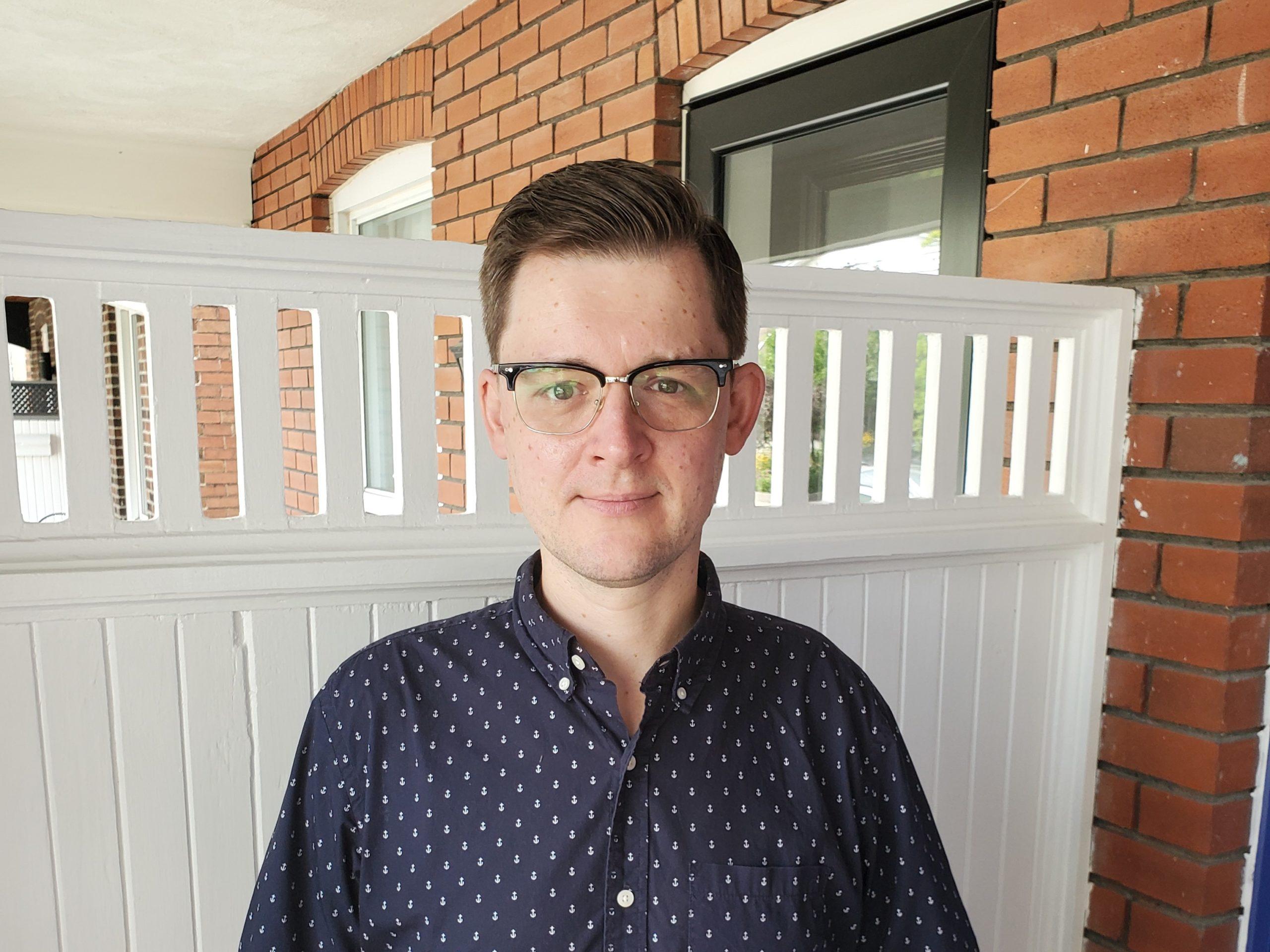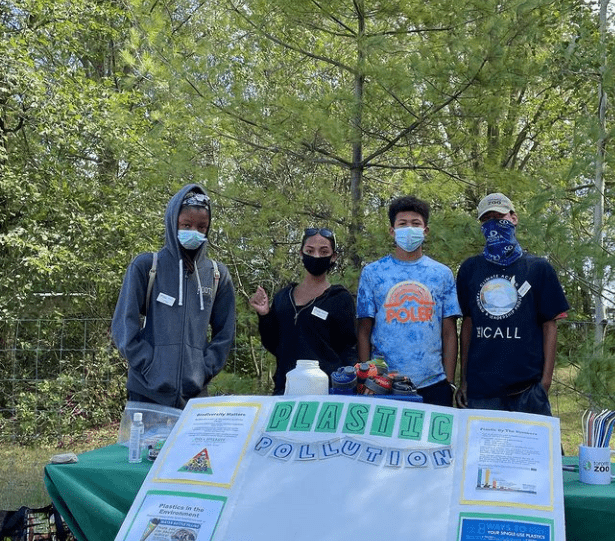Top 10 Issues WoodGreen Faced During the First Wave
The COVID-19 pandemic affected all businesses and non-profits in unprecedented ways. At WoodGreen, we wanted to try to understand how our programs were impacted during the first wave and utilize these insights to position ourselves as an evidence-based decision-maker during the subsequent waves of the virus. We created the COVID-19 Report to showcase the balanced reality of rampant increases in demands and needs, some unsurmountable limits, and extraordinary moments of perseverance. You can read the full report here or continue below to see a summary of the key insights.
Words That Describe WoodGreen During the First Wave of COVID-19:
- Resilient: Non-profits often have a unique method of scraping together what limited resources we have and making incredible things possible for our clients. During the height of the pandemic, this limited resource optimization was extremely apparent and one of the biggest keys to our successes in the last year.
- Nimble: Several important projects and initiatives were not able to get the traction they needed at WoodGreen due to competing priorities. The pandemic managed to push them to the front of the queue and important progress was made in the areas of improving our technology solutions, increasing our capabilities to offer remote work and services, tackling special projects and fighting anti-Black racism.
- Learning: Although learning about our communities and their challenges as well as our operations and potential improvements has always been a part of our work at WoodGreen, we have learned so much more this year. We saw the extreme vulnerability of our food insecure, elderly and newcomer clients and we tested innovative program designs. We dove into our data to understand our clients and our work better.
Top 10 Issues We Faced & How We Responded
- High Community Food Insecurity
One of the most immediate and widespread issues WoodGreen had to address was the high levels of food insecurity among our community members. Nearly every program had clients touched by food insecurity and WoodGreen and it’s Foundation tried to support our clients as best we could through gift cards, bags of groceries and meals. Transportation for seniors had to be restricted to only essential uses so easy access to grocery stores was more challenging. We saw an increase use of our Human and Pet Food Bank as well as an over 150% increase in demand for our Meals on Wheels program. We met these demands through program cross-pollination like using our transportation program’s vehicles to deliver Meals on Wheels, through generous donations secured by the Foundation, and through staff redeployment within the organization.
- Constrained In-Person Senior Care
Seniors are one of the most vulnerable populations during a pandemic not just due to food insecurity concerns, but also due to isolation, necessary in-person care and higher morbidity rates when contracting the virus. Senior care programs were essential and continued to operate, but with service changes such as reduced frequencies of interactions, increased use of PPE, restricted visitors, no group programming and phone calls instead of in-person visits. Caregiver burnout was also high without our normal programming available to relieve caregivers, so we had to find safe and/or virtual ways to support them including phone and video check-ins and resources like activity packages. Additionally, these solutions to the challenges of supporting seniors safely during a pandemic had led to a deeper discussion and exploration of using a virtual homecare model for some senior clients post-pandemic.
- Access & Information Barriers for Newcomers
Newcomers represented another particularly vulnerable group during the pandemic, but for different reasons than seniors. Newcomers can be at a higher risk of contracting the virus because they can be more likely to live in intergenerational homes where social distancing can be much more challenging, to work in essential jobs that put them in the community on a daily basis, and to have lower incomes leading to difficulties with food security, housing, childcare, unemployment and access to technology. Plus, being new to Canada, they may not have strong networks of support to help them, the knowledge of where to access public health information or the high language skills required to digest the everchanging information on protecting oneself from COVID-19. WoodGreen operates on the basis of the social determinants of health, meaning we try to understand and provide support on a full menu of settlement, employment and wellbeing of newcomers. Our newcomer program staff acted as the point of contact for COVID-19 information to newcomers in our community so that they were able to access and understand (in their own languages) vital information whenever they needed it.
- Loss of Childcare Services
With the nature of the first wave, childcare services had to be suspended for several months. WoodGreen operates nine childcare centres across the city which means this suspension impacted our services and staff significantly. We were able to partially reopen this summer, although with many thorough safety precautions which likely will be long-lasting changes to childcare as we knew it.
- Anti-Black Racism
COVID-19 was not the only major issue affecting our world; Anti-Black racism was brought to the forefront of concerns due to the efforts of organizations, protests and individuals. According to data from the City of Toronto, 8.5% of Toronto’s population identify as Black, yet 85% of racist hate crimes were against Black Torontonians.
WoodGreen is acting in solidarity with the Anti-Black racism movement, beginning with education with the intent for transformation. We have hired a Director of Diversity, Inclusion, Belonging, and Equity (DIBE) who is working closely with our existing DIBE Committee on continuing to implement the Awake to Woke to Work framework. Staff have had team diversity trainings and discussions on how to incorporate anti-racist projects and processes into their everyday work. Diversity is an integral piece of our new Strategic Plan and we’ve created metrics to measure our progress.
- Limited Access to Technology
Similar to food insecurity, limited access to technology was an issue that touched nearly every program at WoodGreen. On the staff side, we were not previously set up to be a completely mobile organization, most staff did not have a dedicated home office with strong Wi-Fi, and many had childcare or caregiver challenges. However, IT was able to get our workforce mobile as soon as possible. A cloud system was already in place, but the use and knowledge of how to use it was not widespread. Trainings and education, the advancement of related IT projects and the ordering of new laptops were all executed. On the client side, many could not afford devices or data plans and would normally use public devices and public Wi-Fi networks that were now no longer available for use. The WoodGreen Foundation helped secure various donations of data and devices, staff conducted as much support over the phone as possible and trainings on how to use Zoom and Microsoft Teams were added to programs’ menu of services.
- Isolation and Poor Mental Health
Few would argue that COVID-19 hasn’t taken a significant toll on everyone’s mental health. But for some of our clients, that toll might be larger than it is for others. Our counselling sessions were adapted to be virtual, but not having a physical space to feel comfortable, secure and supported in is difficult. Youth disengagement from our programs was apparent as gathering together with their peers and participating in recreational activities like sports leagues and dance groups were some of the most rewarding aspects of our youth programming. Isolation within our Housing & Homelessness programs was felt as participants could not take part in communal activities like group meals and hanging out together in lounges and TV rooms. Seniors were also heavily isolated with restricted visiting, no non-essential transportation or outings and no group activities. Although these issues could not be completely erased due to the reality of a pandemic, virtual options and creative solutions attempted to mitigate them. Some outdoor activities could still occur, especially in the summer months, and online communities were used where appropriate.
- Remote Work and Office Safety
The way that we work has significantly changed. If it is still in the community or the office, then it is with heavy PPE, new policies and procedures, social distancing, and restrictions. If it is at home, then its with virtual meetings, with children running around, and with no in-office social interactions. Everyone, but especially People and Culture, has tried to respond and support staff accordingly. Policies, procedures, trainings, signage, barriers, reorganized work spaces, new technology, and new processes has made it possible for staff to safely work remotely, in the office, or in the community.
- Community Outreach Restraints
Reaching the populations we serve is not always easy, so effective outreach for WoodGreen is often in the community or through walk-in traffic. However, the height of the first wave of the pandemic did not allow walk-in’s or the ability to conduct outreach at community centres, faith-based places, public libraries, schools and events as they were also closed or restricted. So how do we reach vulnerable clients? Every program had to find ways to respond that were effective with their specific type of client. For example, in Crescent Town where our Interprofessional Care Team operates, they mobilized residents within the housing buildings to form a Community Response Team and reach other residents with information, PPE, and support.
- Resource & Staff Allocations
Clients, staff, assets, volunteers, restrictions and other resources were limited, affected, or reallocated in response to COVID-19. Client numbers for programs ranged from virtually zero for suspended programs to over 200% increases for other programs. We also saw how the challenges of having vacant positions and filling those positions were exacerbated during the pandemic. The value and use of real estate also changed from pre-pandemic times. We have had to suspend most of our volunteer program for the safety of our volunteers and staff. And restrictions impacted how we could use our resources, such as the halting of evictions, paused internship components of programs, and the suspension of the income tax clinic for several months. All of these issues meant we needed to really hone in on optimizing what resources we did have, utilize redeployment to account for shifts in program demands and client needs, and cross-pollinate between similar programs.






